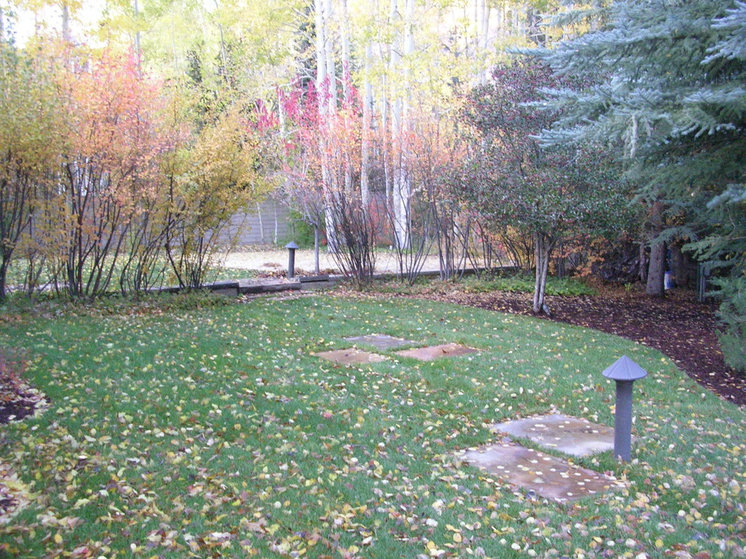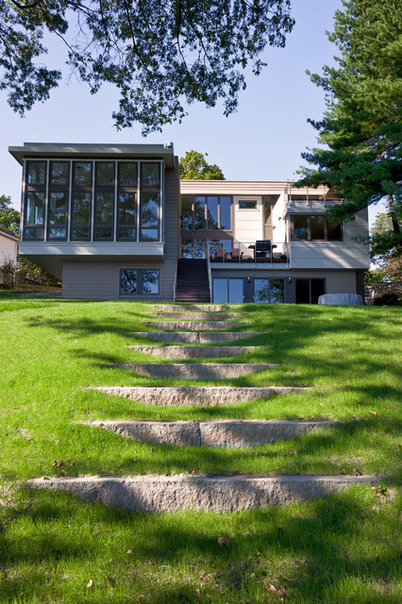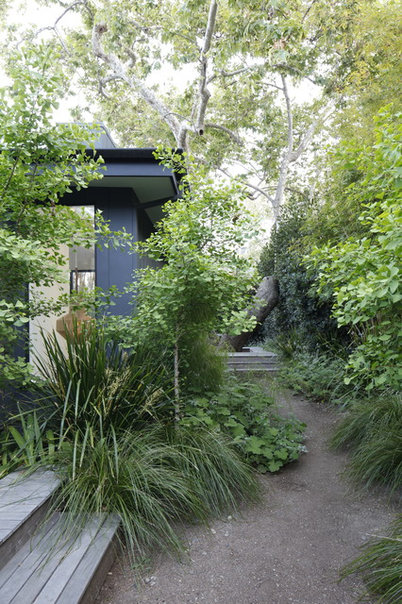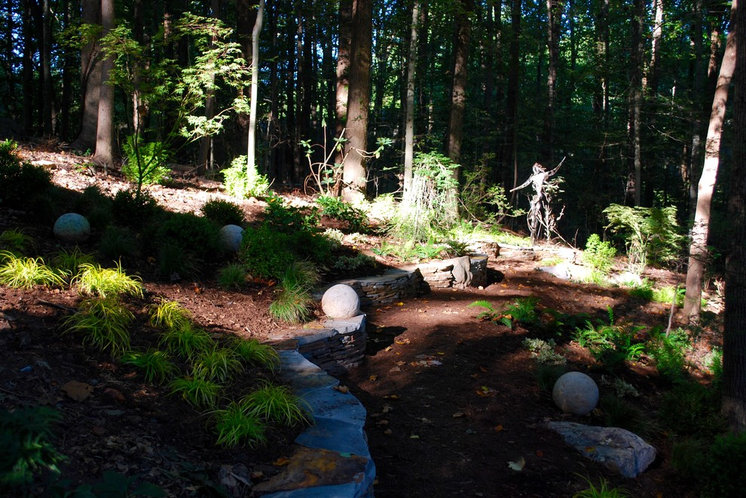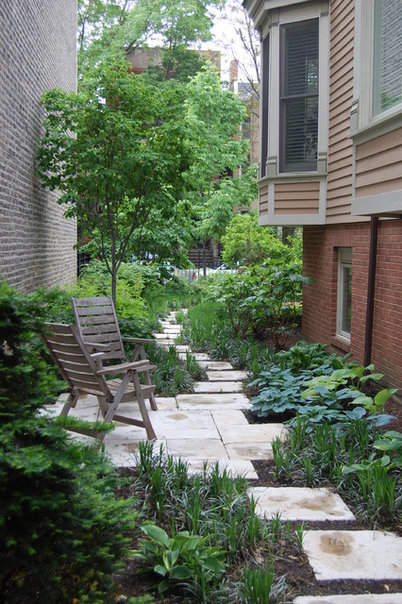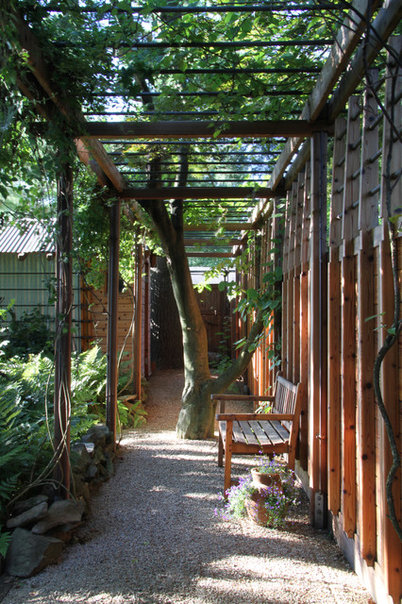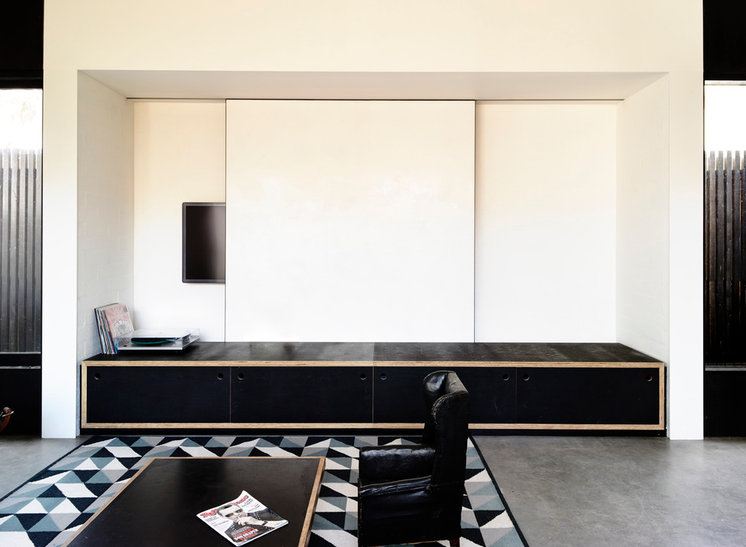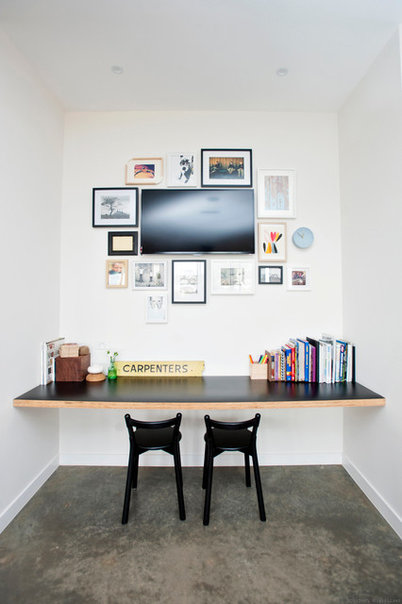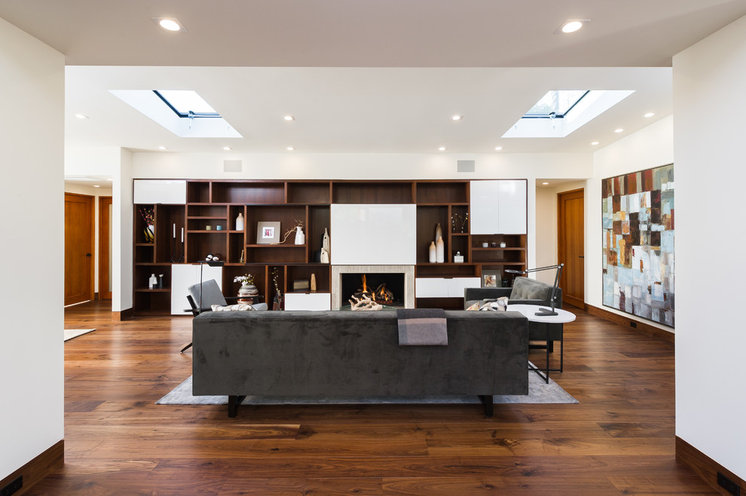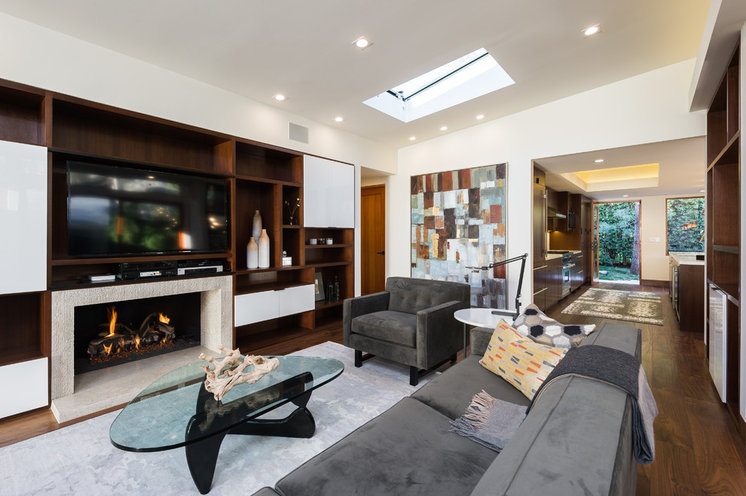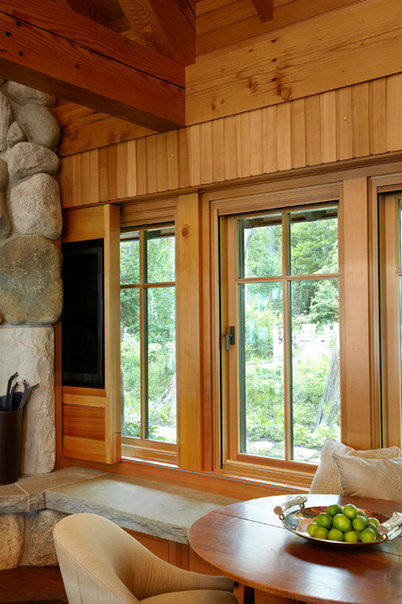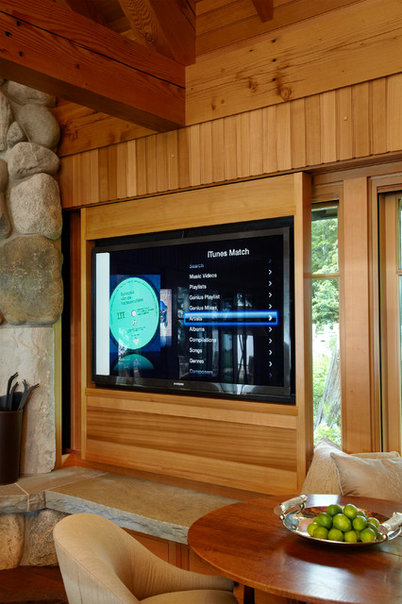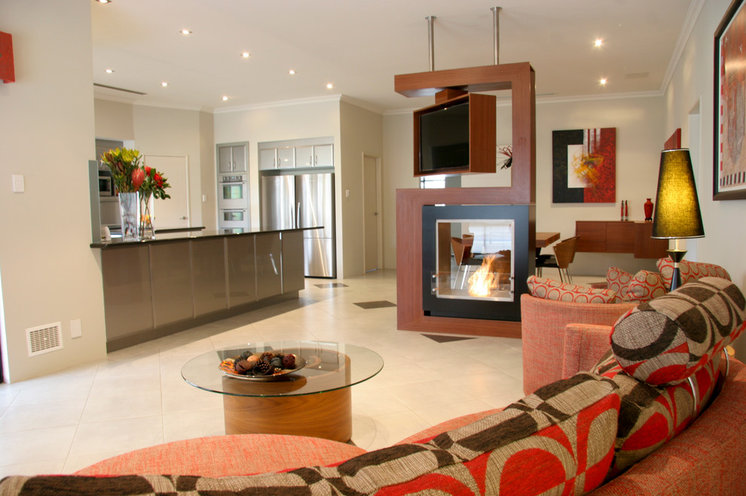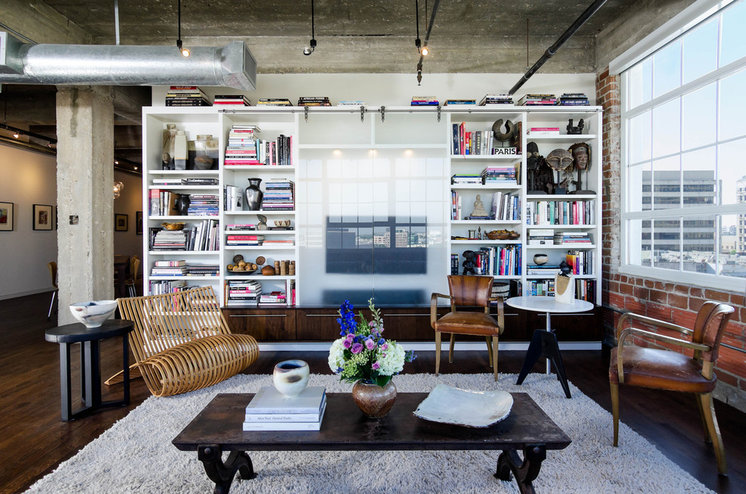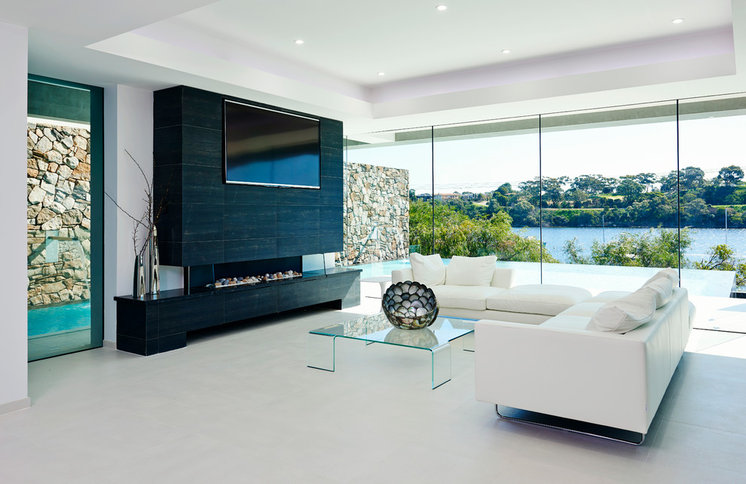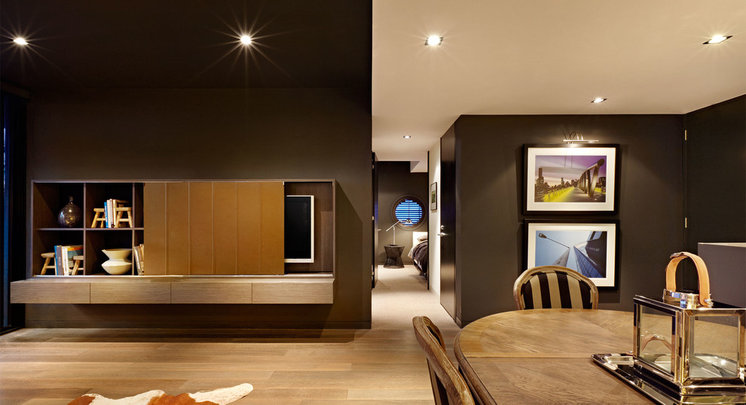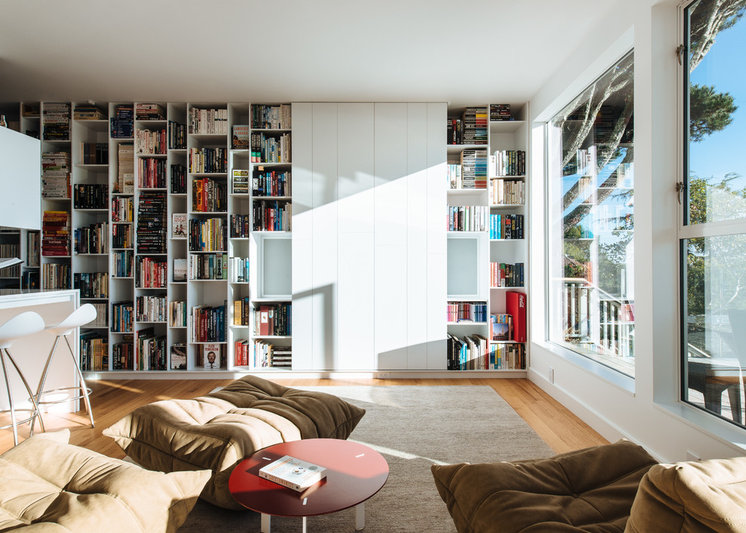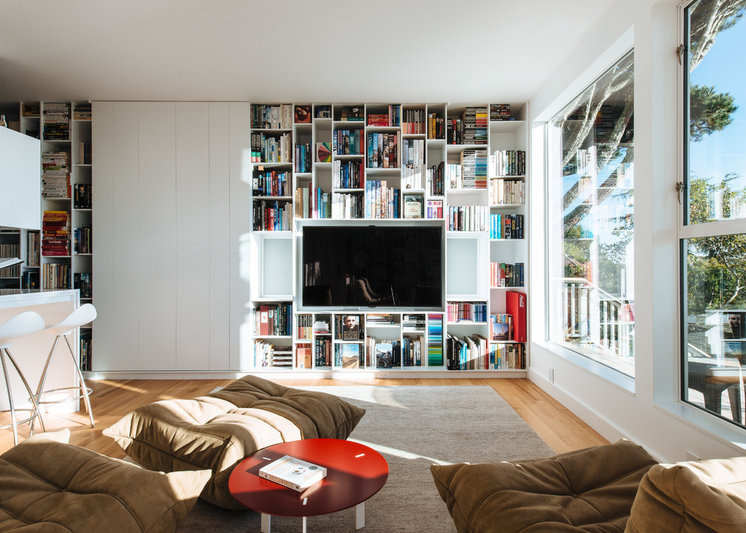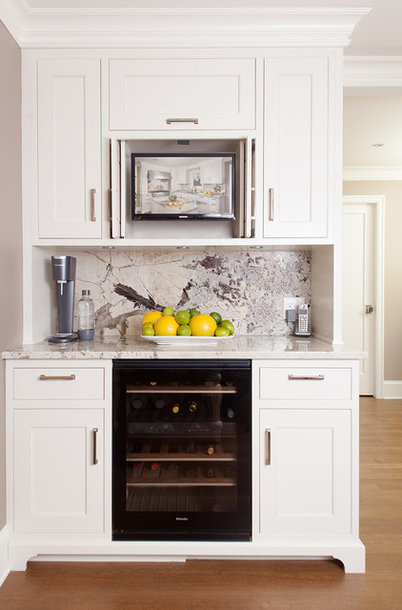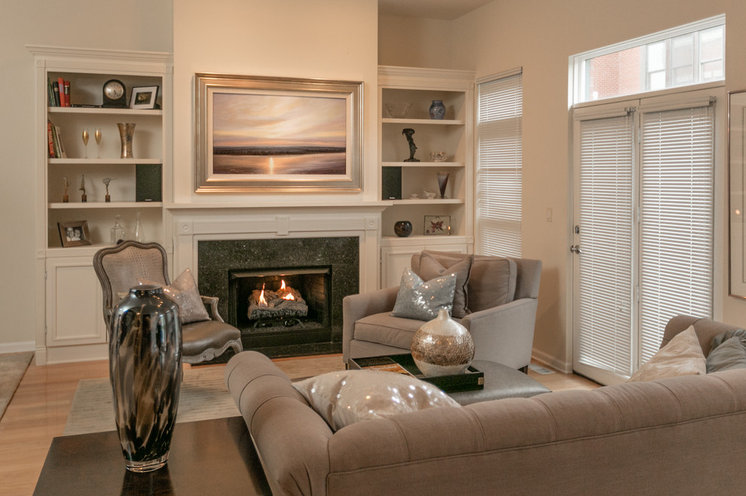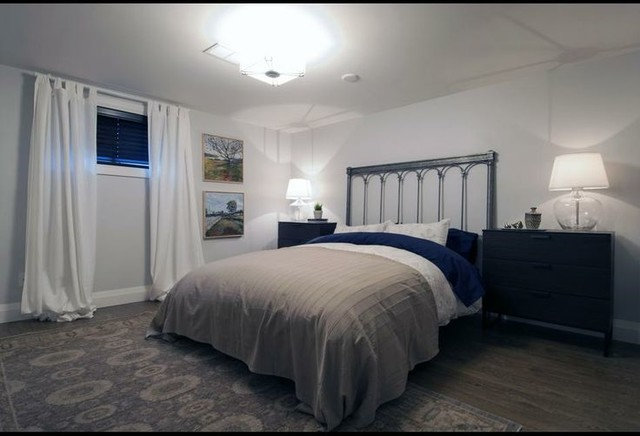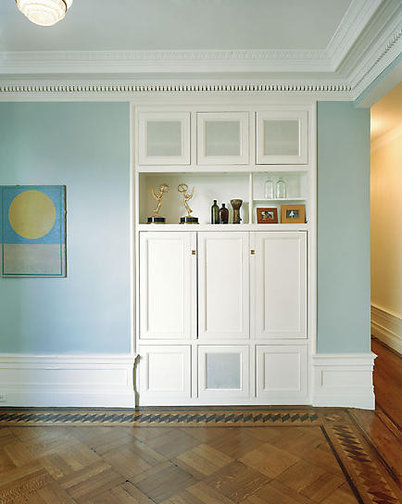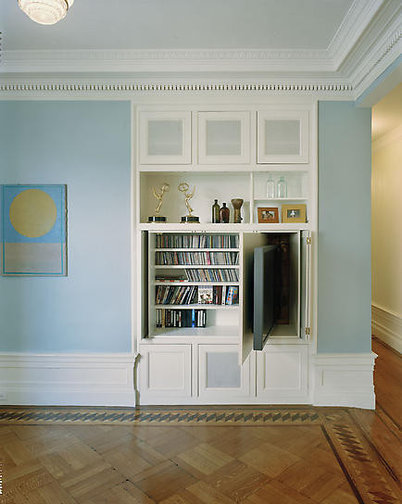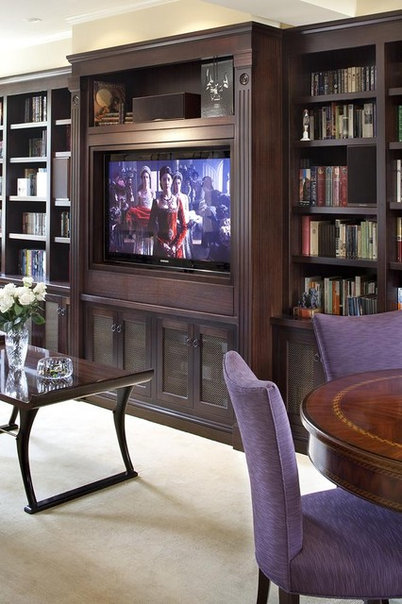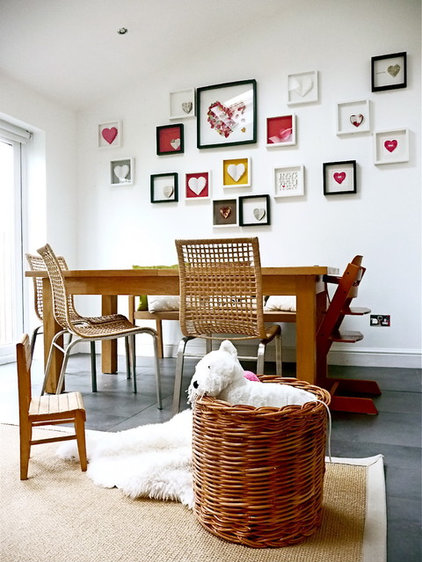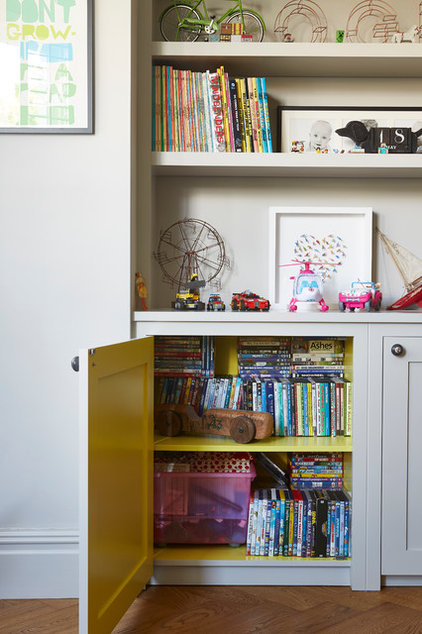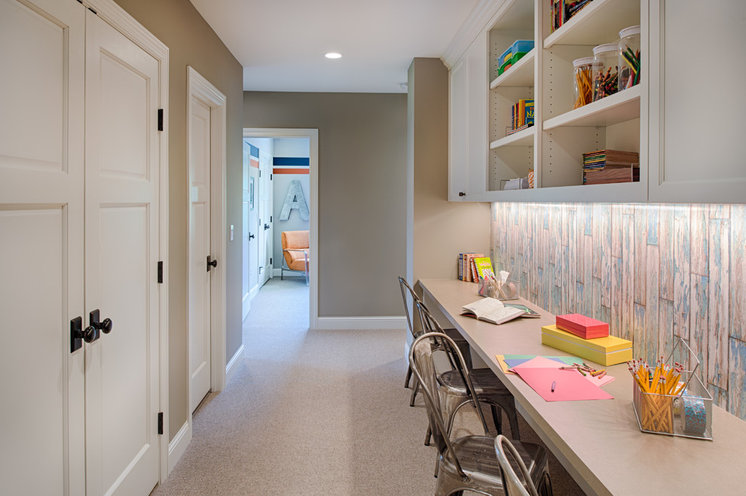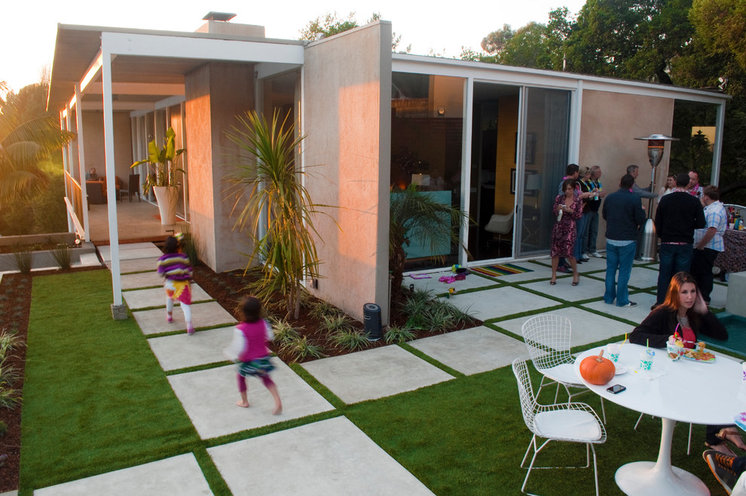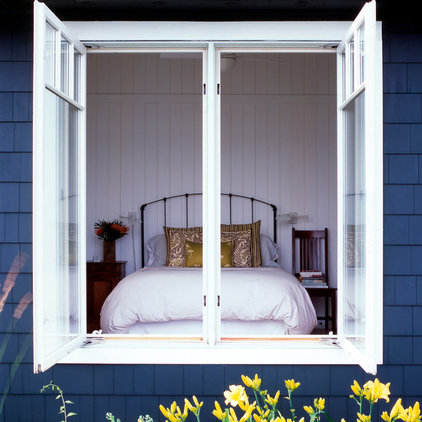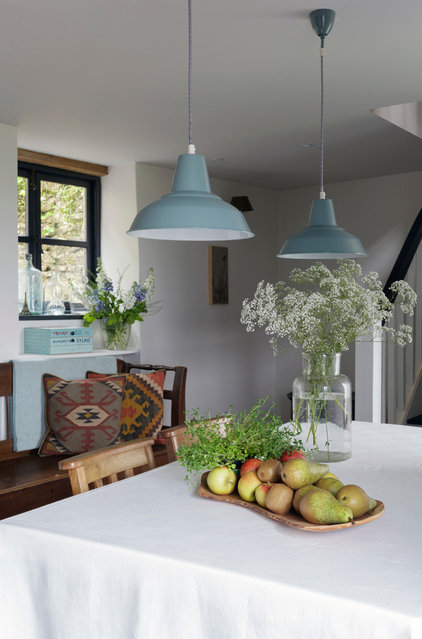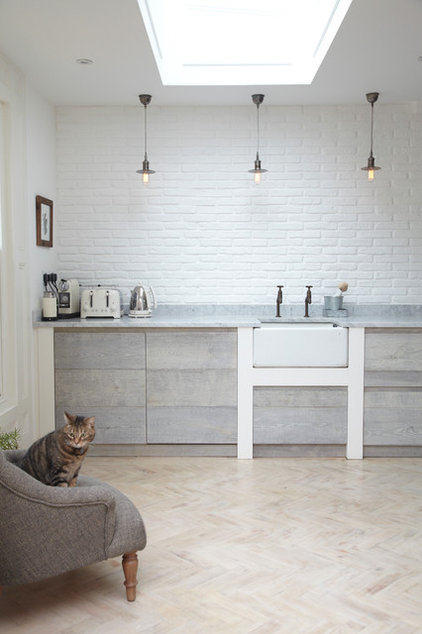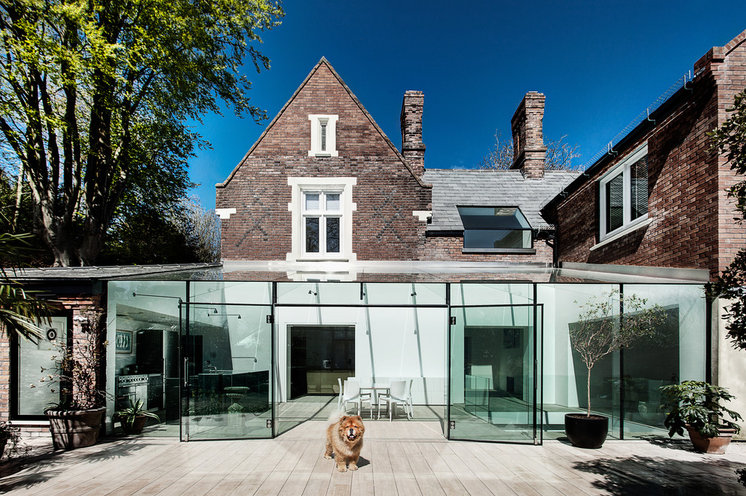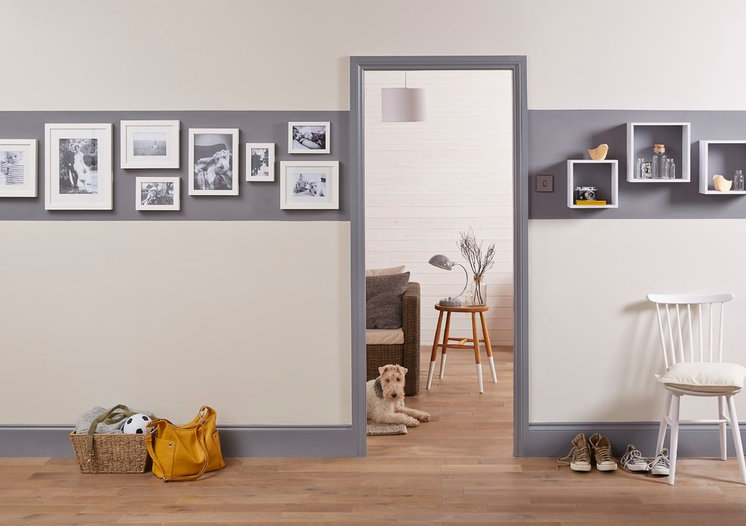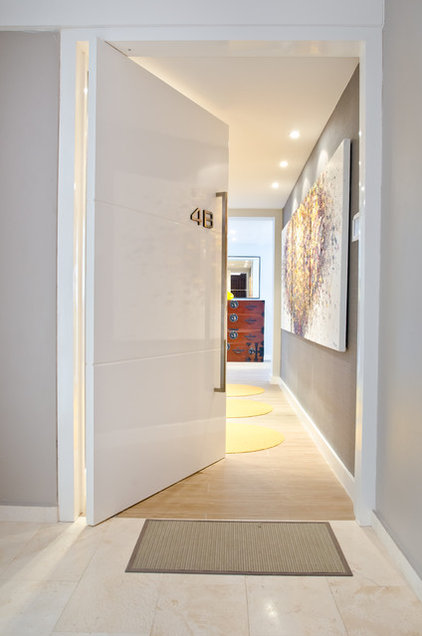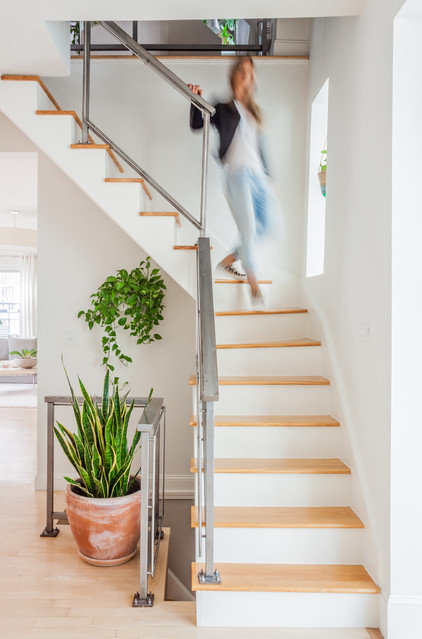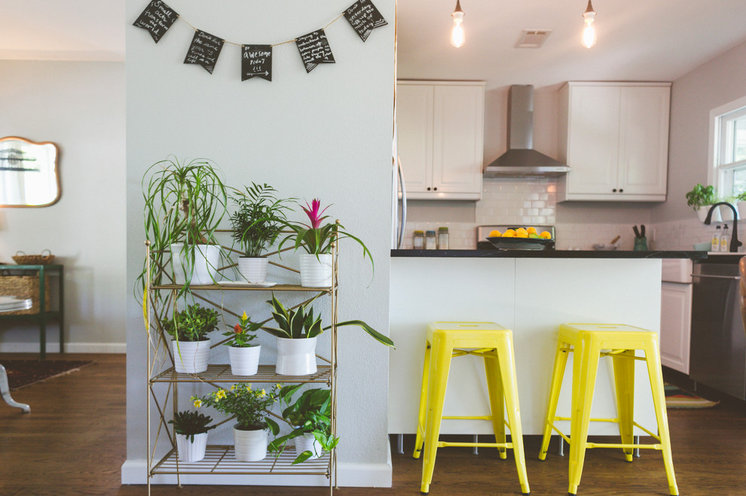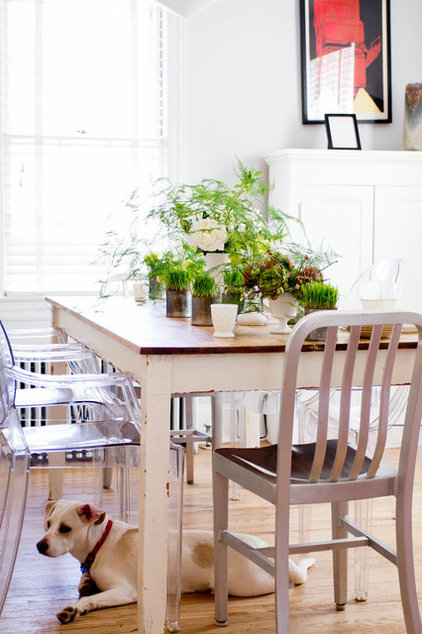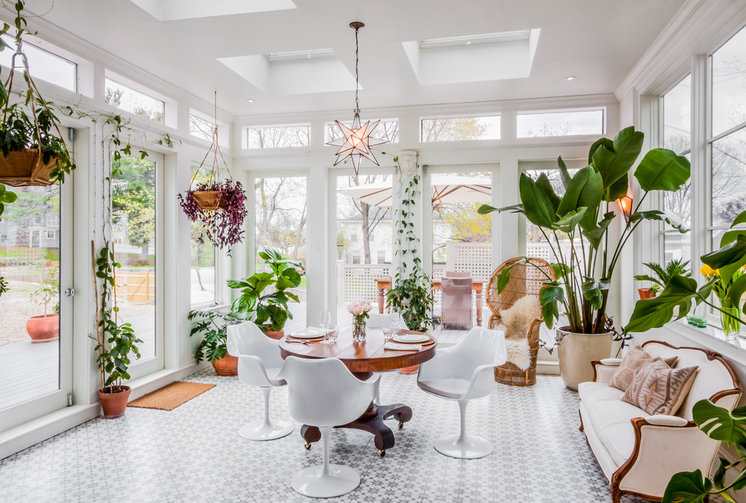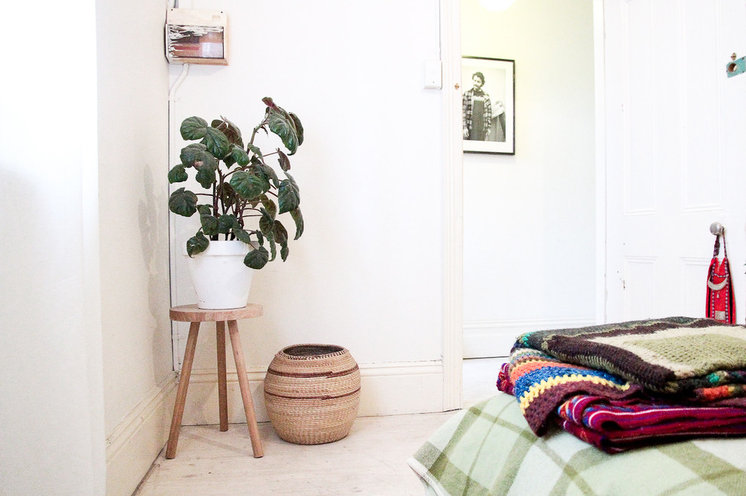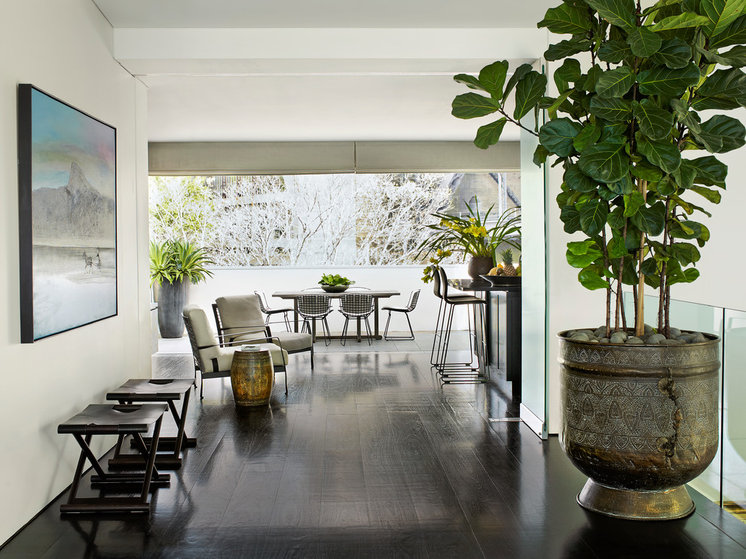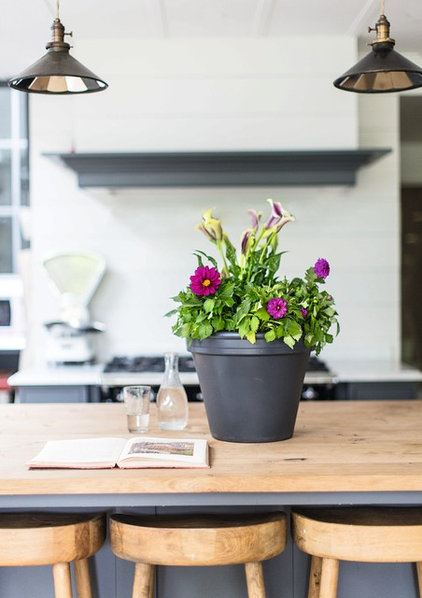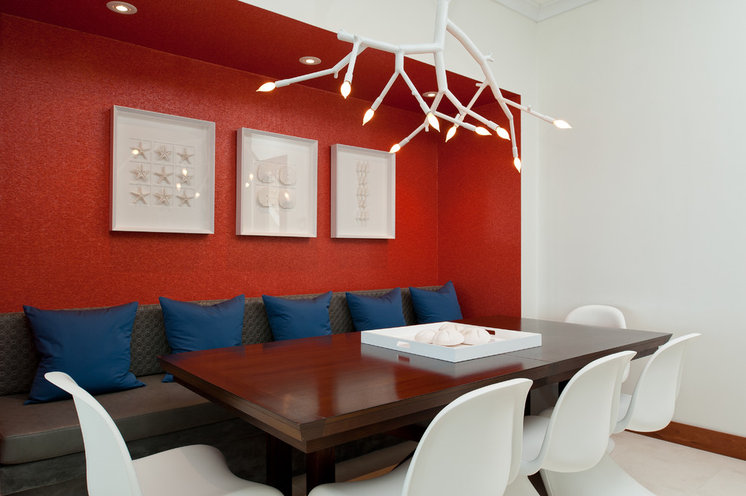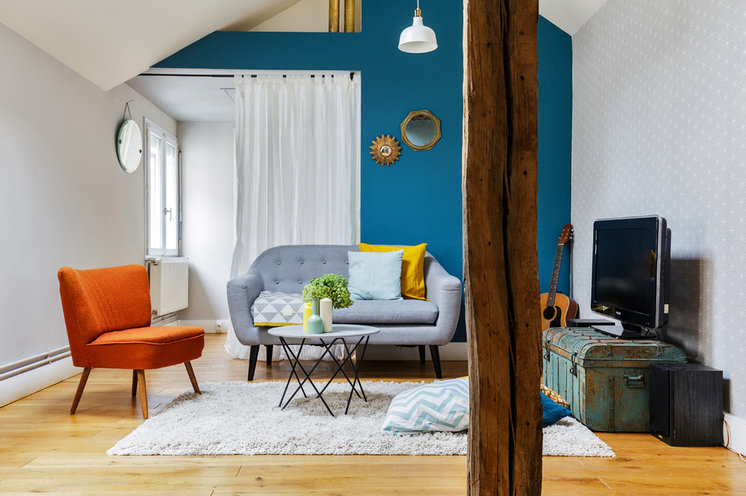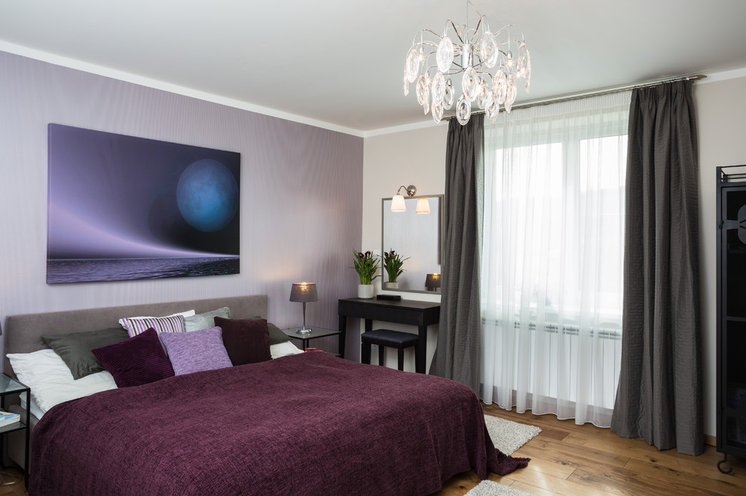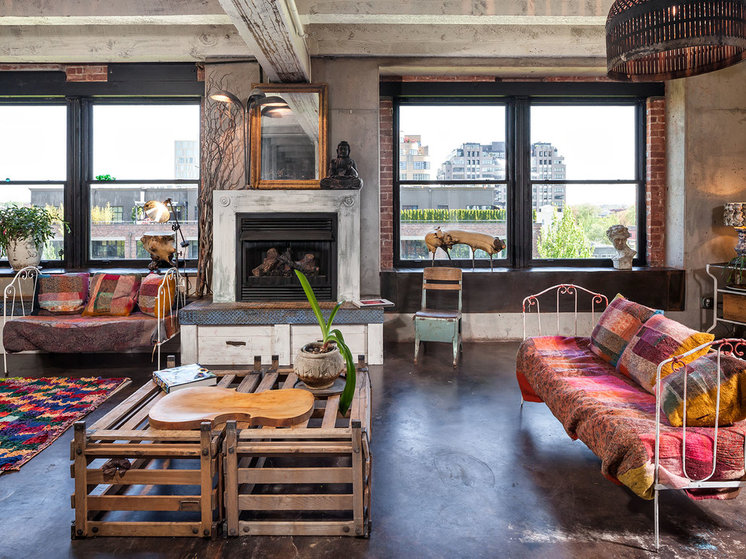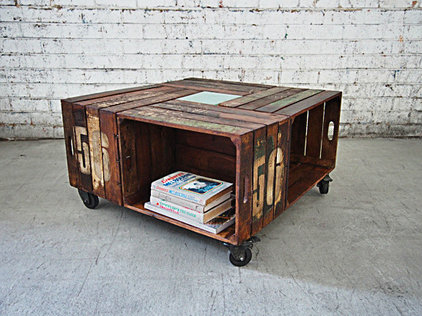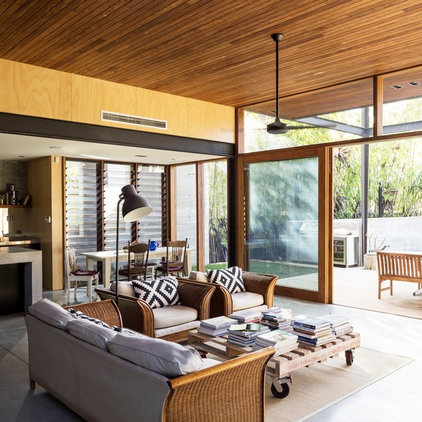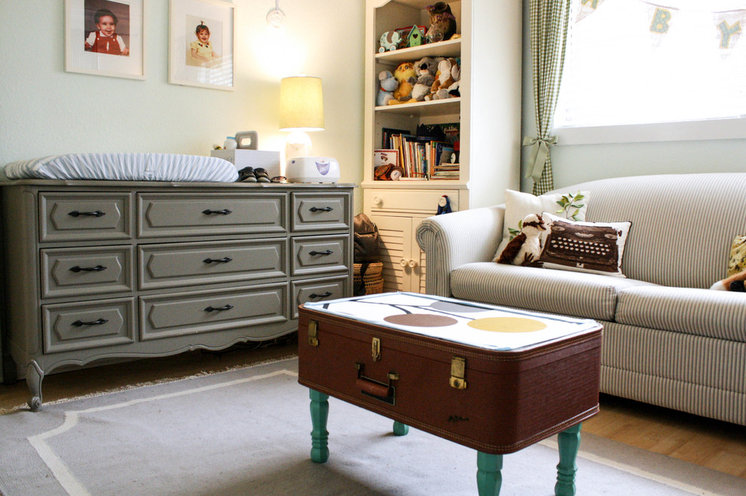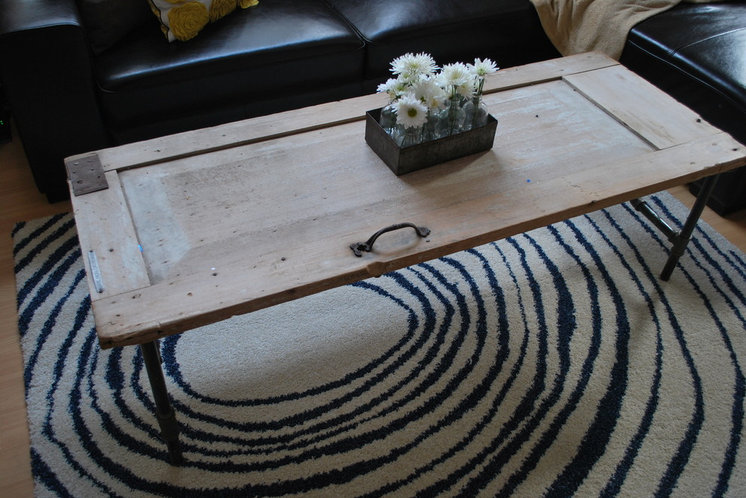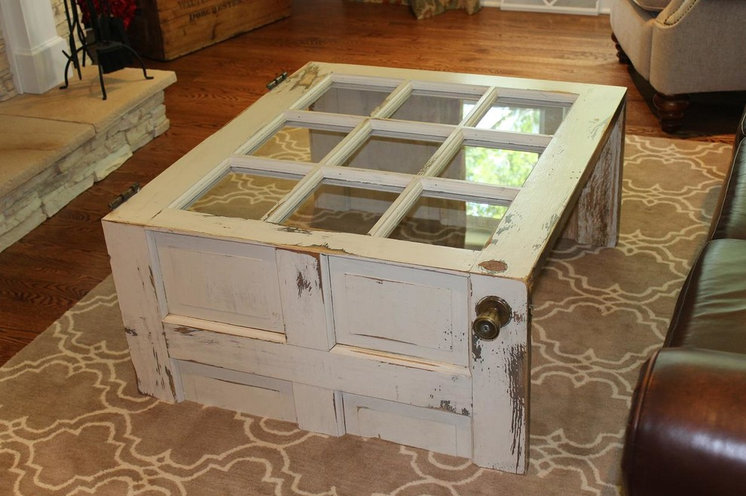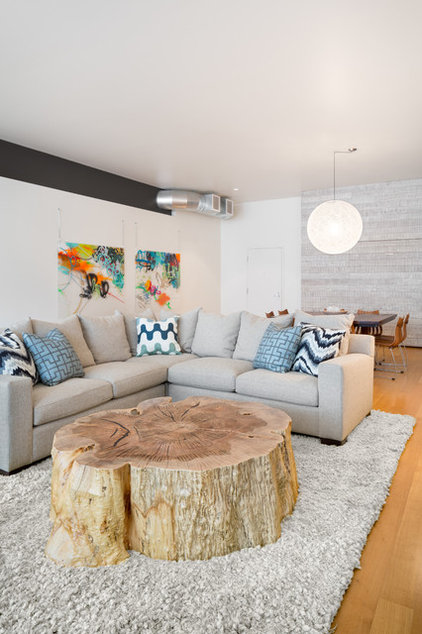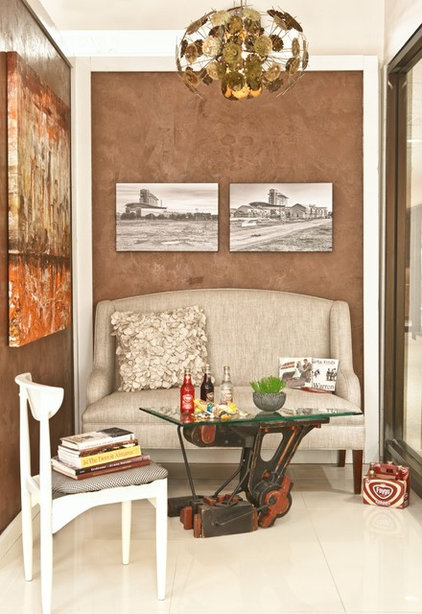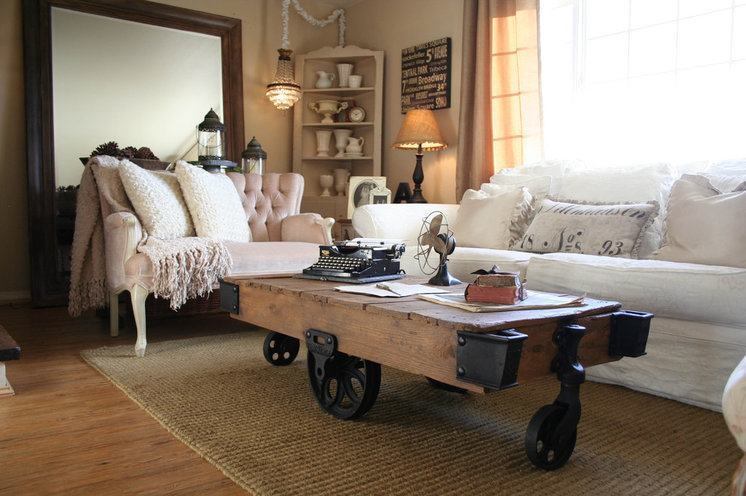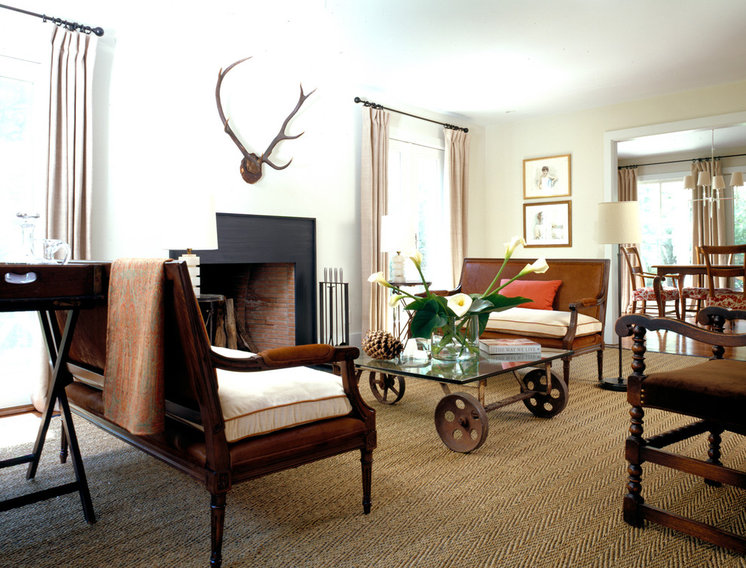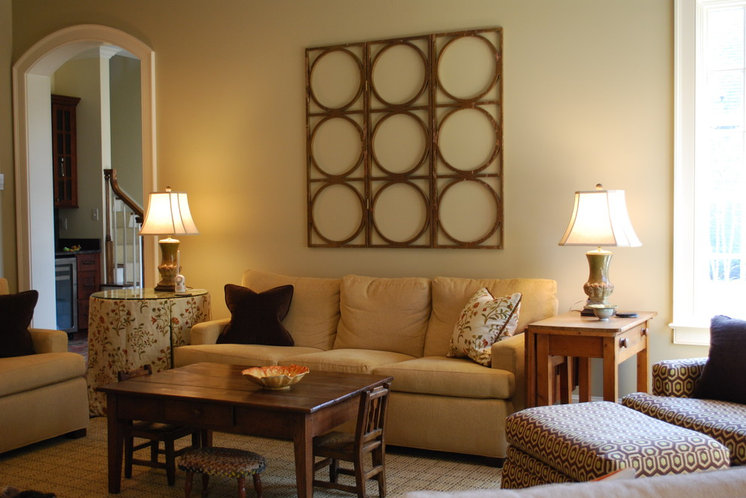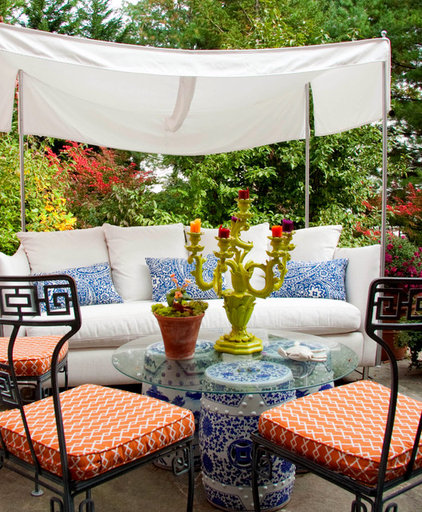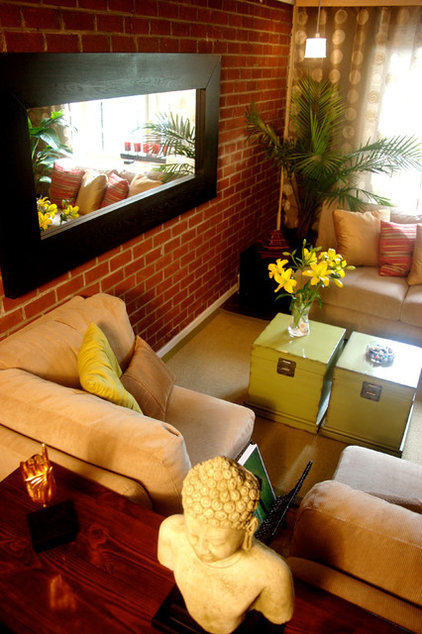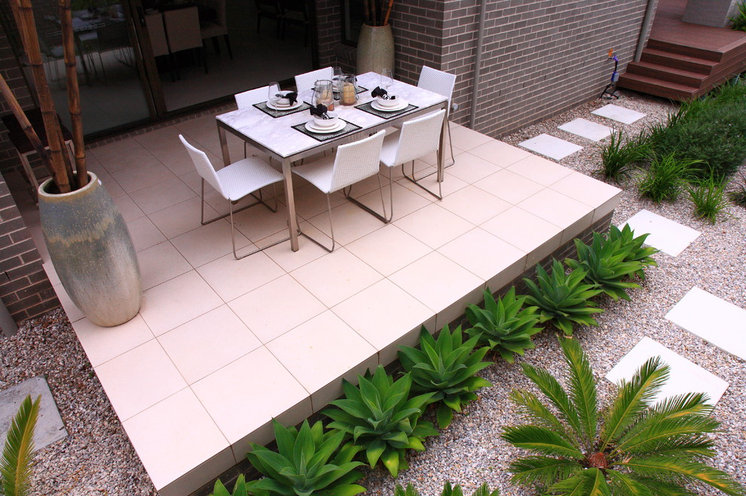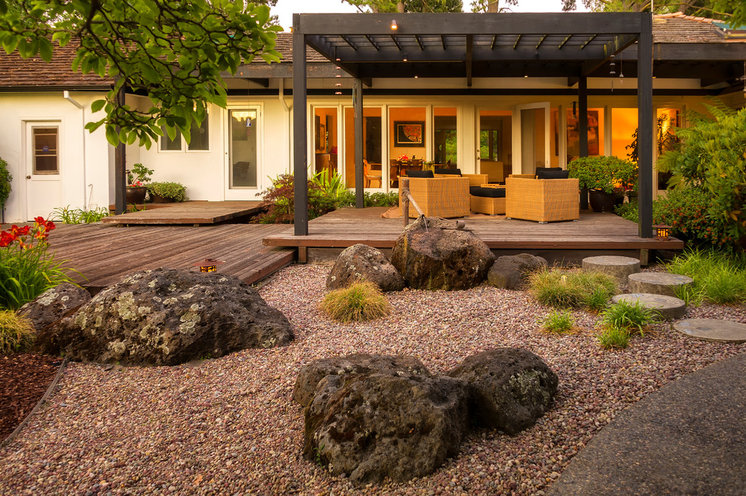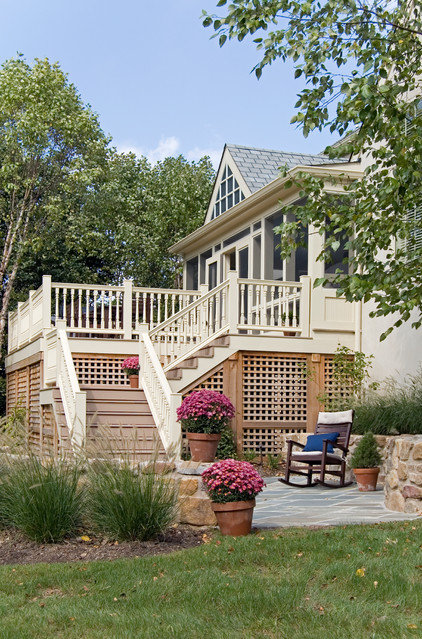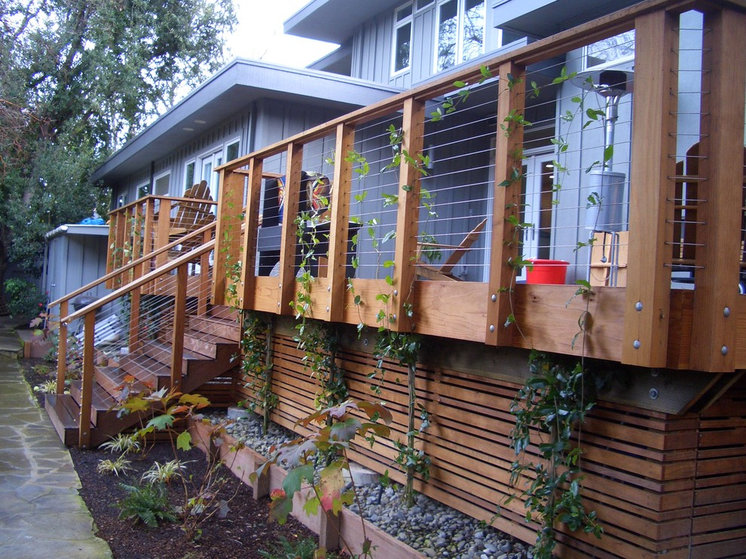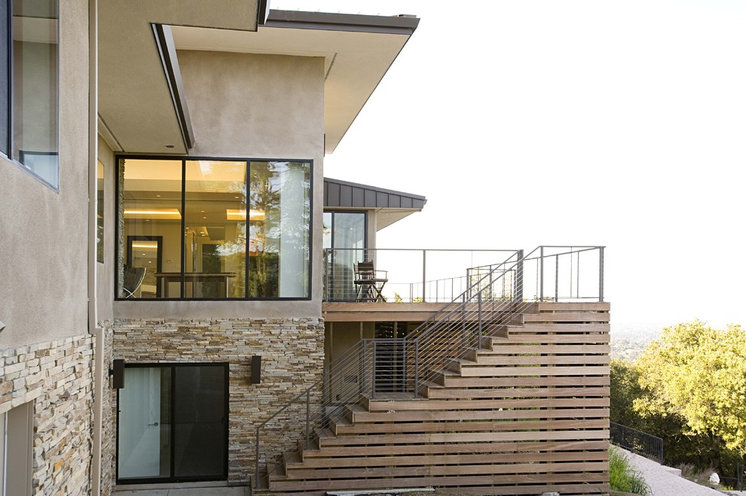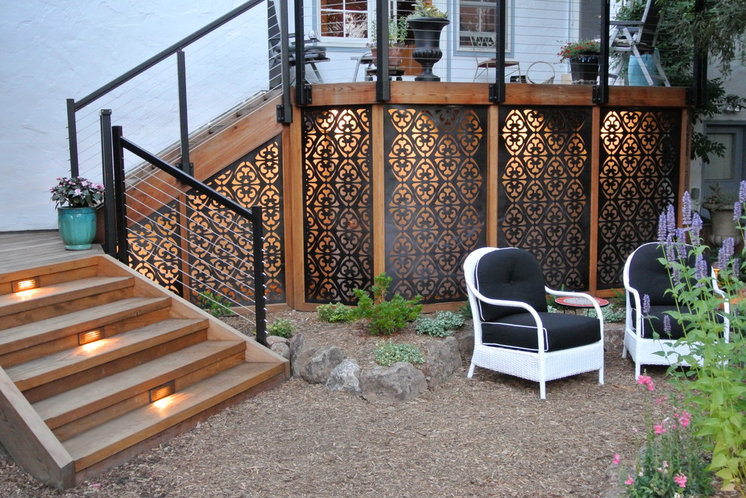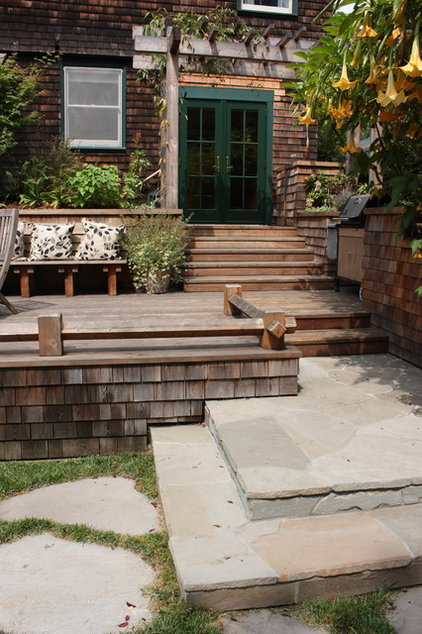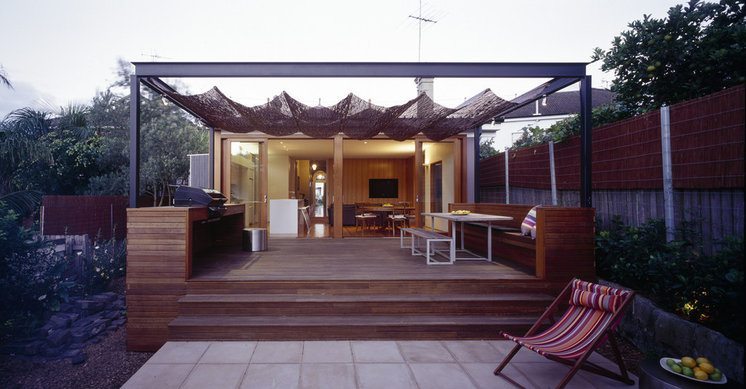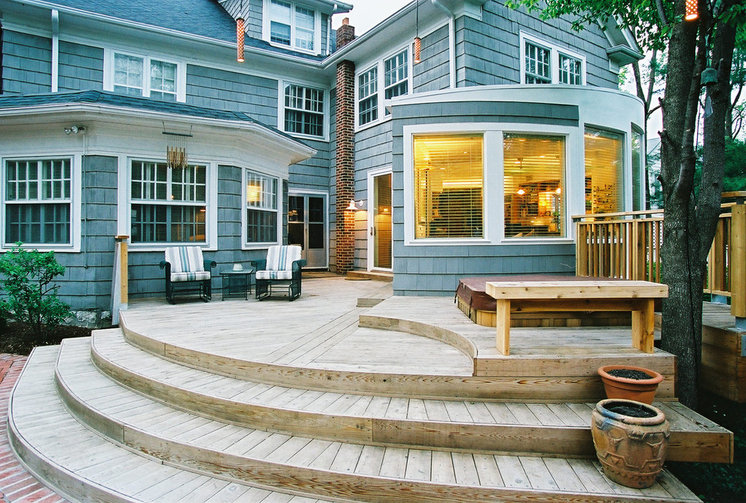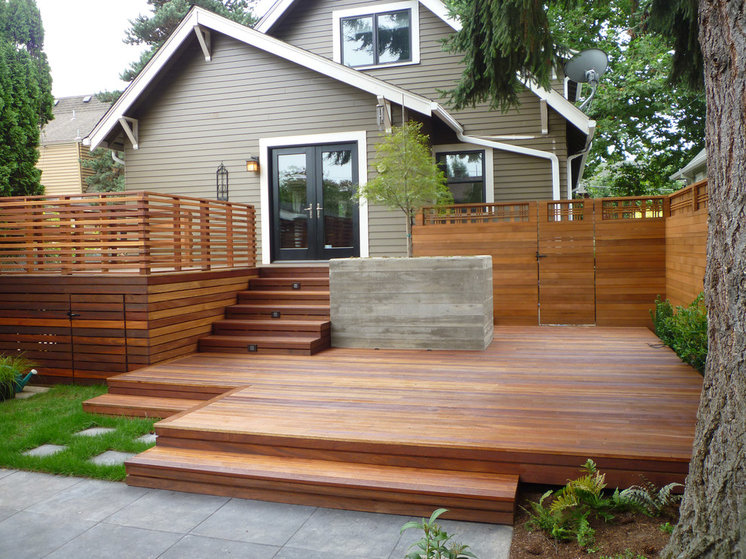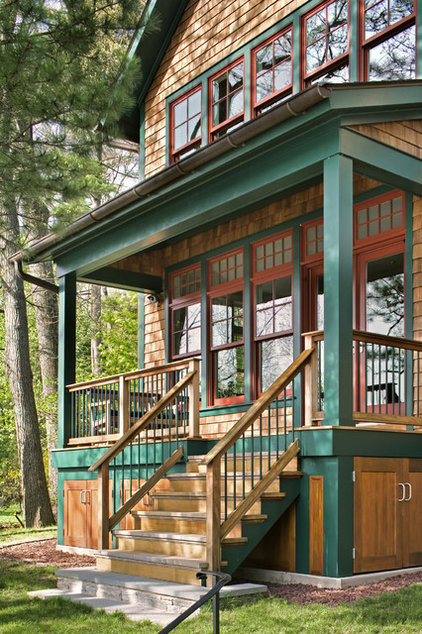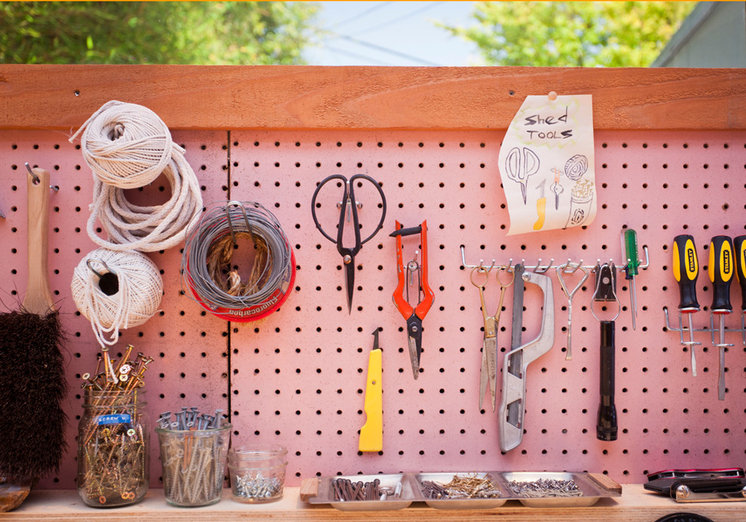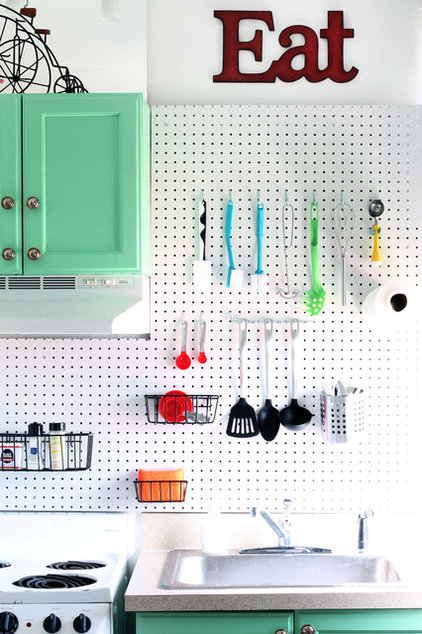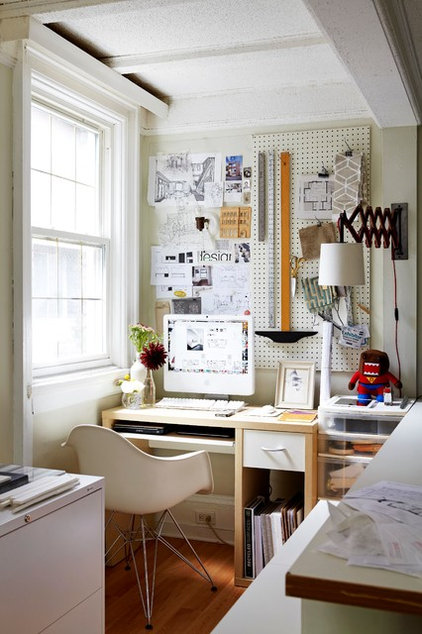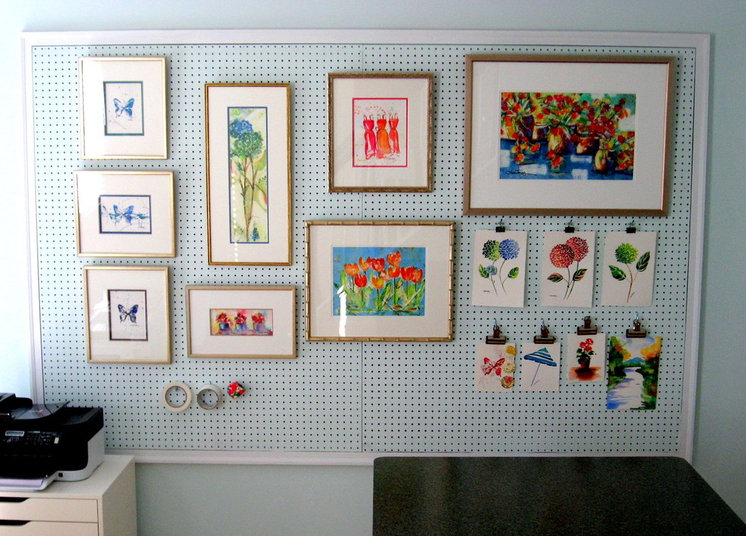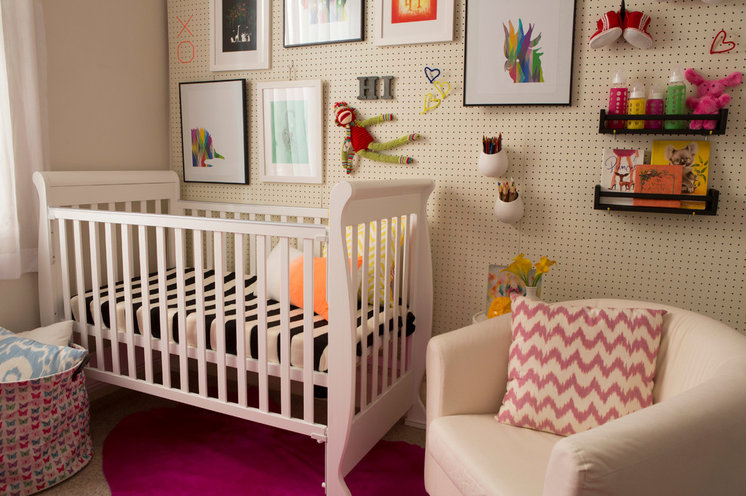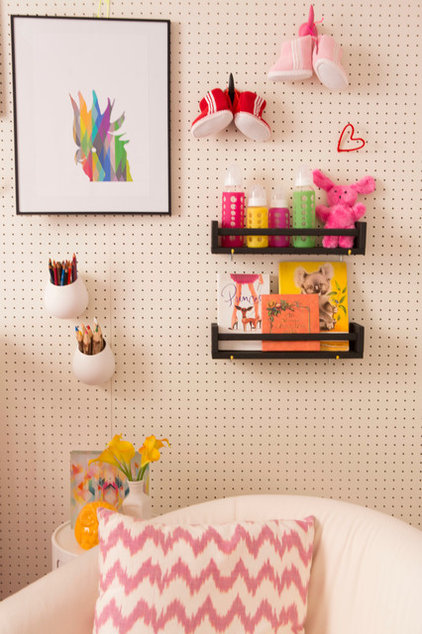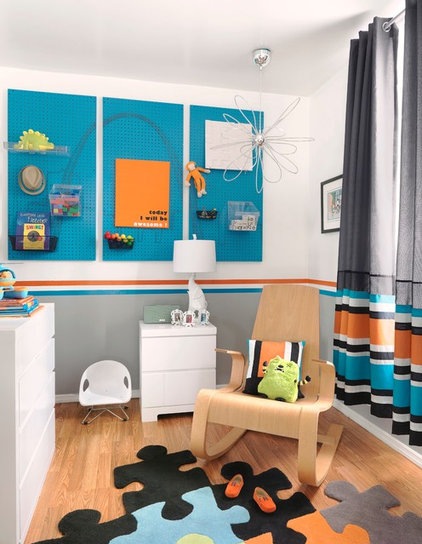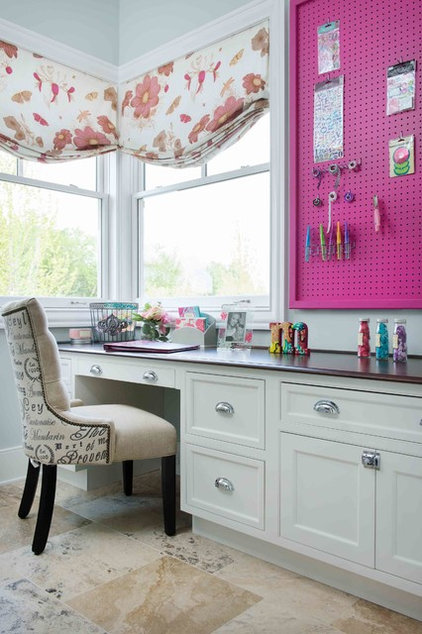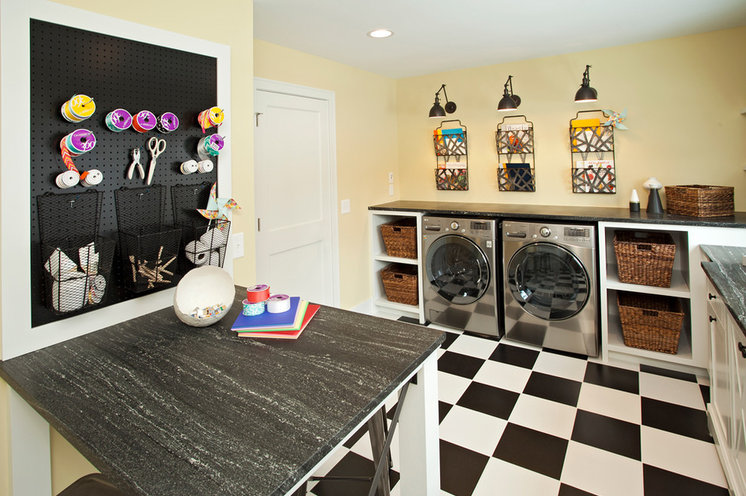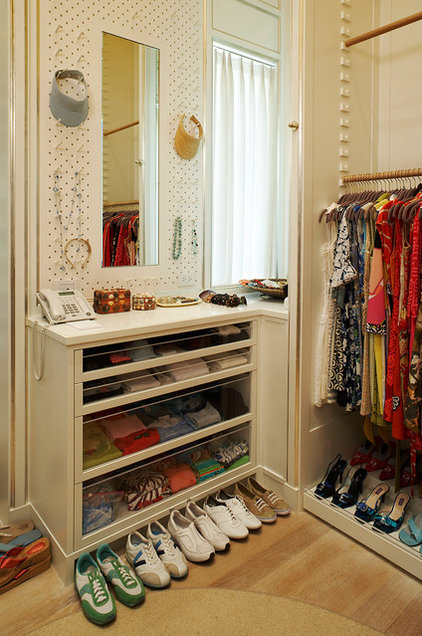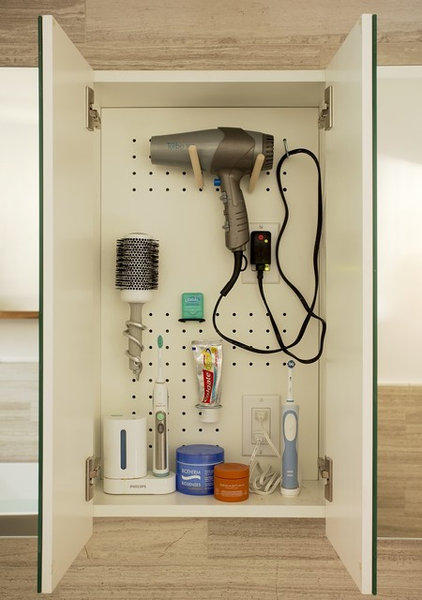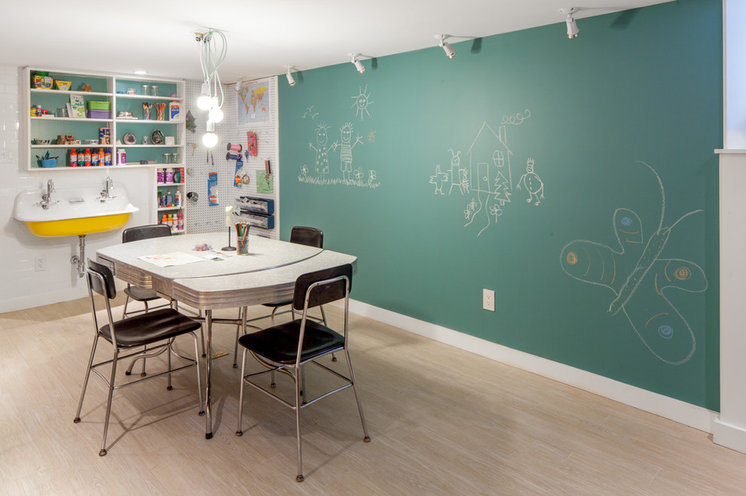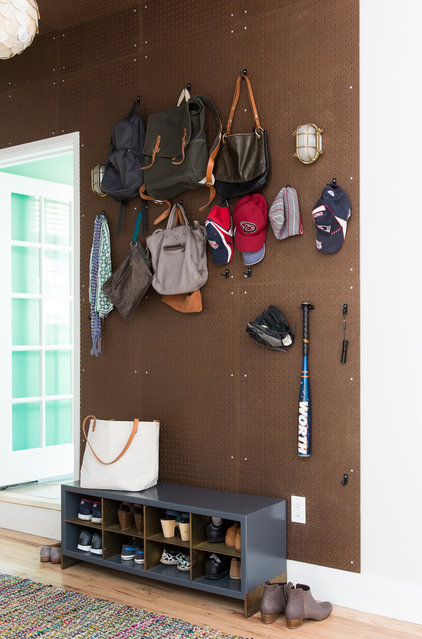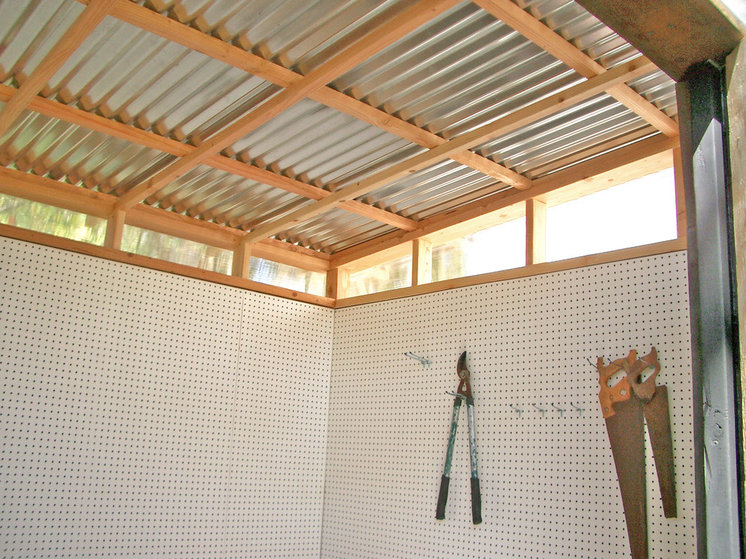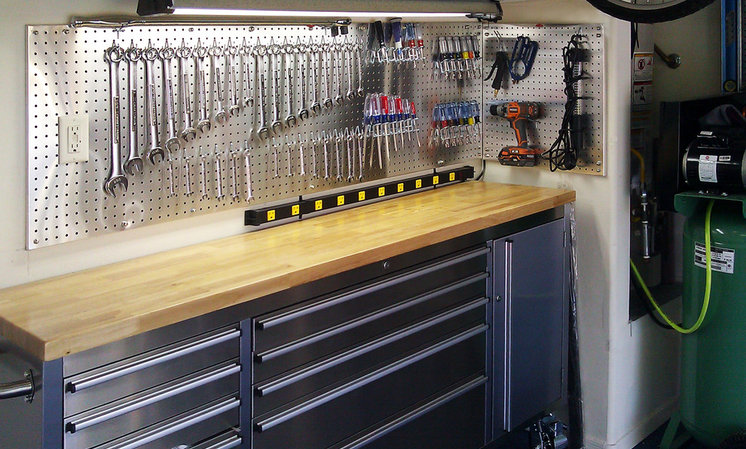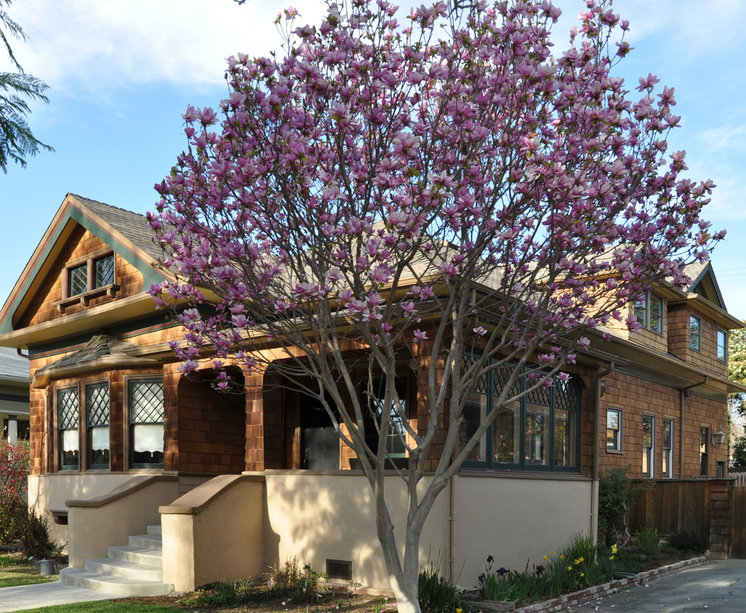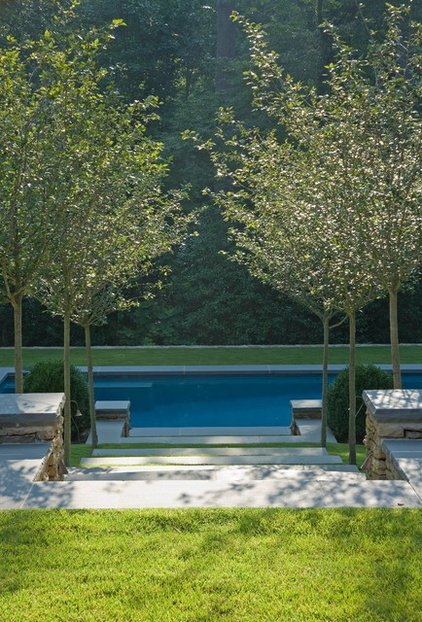The path shown here embraces its sense of place and begs to be explored. The best paths embrace their environment. With its curves and unknown destination, this path calls to those who dare to wander far enough to discover its hidden story.
Tag Archives: Expectations
Can You Spot the TV?
The transparency of the fireplace and stunted height of the structure keep the piece from intruding on the space or blocking the flow of light.
TV mirrors like this have come on the market as consumers look for entertainment systems that won’t disrupt their room designs. You simply select a frame that suits your decor or choose no frame at all. Just think, now you won’t have to worry about getting your laptop or tablet wet when watching a movie in the bath. Just direct your attention to your bathroom vanity mirror, sink in deeper and say, “Ahhh.”
Shave Up to 15% Off Your Heating Bill with This Simple Tip
Think you’re saving on your heating bill by keeping it at a constant 68 degrees? You’re not, and here’s why.
It’s easy to imagine your energy bill going sky-high when you hear your furnace fire up. That’s the reason so many people believe keeping a steady temperature of 68 degrees is the key to energy savings. But that’s a myth.
In fact, the lower the temperature, the slower your house loses the heat, according to energy.gov. And that keeps your hard-earned money from floating out the door.
So if you truly want to see your heating bill drop, you need to turn down the temperature another 10 or 15 degrees for eight-hour stretches on a regular basis — like when you’re at work, sleeping, or out of town.
When you return, turn it back up to 68 degrees. Or better yet, take advantage of what a programmable thermostat can do.
In the summer, just flip the strategy:
- Set your AC to 78 degrees when you’re home.
- When you leave, turn the AC off or set your thermostat to a much warmer temperature.
Here are some other misconceptions about and tips for reducing your heating and cooling costs.
Resist the Urge to Crank Up the Thermostat
Turning up the thermostat past your desired setting won’t speed heating. Your furnace works at the same pace regardless of temperature settings. That also applies to your AC; setting the thermostat to its coolest temperature won’t chill your home any faster.
A Programmable Thermostat Doesn’t Automatically Reduce Energy Use
Installing a programmable thermostat with factory settings isn’t going to do you much good. You can only reduce the amount of power your home consumes if you create a personalized heating and cooling program that makes the most of your own energy-saving opportunities.
Programmable thermostats come in four different pre-set schedule styles, so it’s important to pick one that’s in sync with your household’s scheduling needs:
- 7-day programming offers the most flexibility. It allows you to set a different heating and cooling schedule for each day of the week.
- 5-1-1 programming is a good choice if you have a predictable weekday schedule. It lets you set an identical heating and cooling plan Monday through Friday, and a different plan for Saturday and Sunday.
- 5-2 programming is similar to the 5-1-1 programming, except you can only program one heating and cooling schedule for both Saturday and Sunday.
- 1-week programming is a good choice if you stick to the same schedule every day of the week. It allows you to create a single heating and cooling plan that repeats daily.
Bonus tip: When daylight savings comes around, remember to adjust your settings so your heating and cooling program isn’t off by an hour.
Some Smart Thermostats are a Lot Smarter Than Others; Choose Wisely
Smart thermostats aren’t all the same. Sure, all offer Internet connectivity for remote management using your mobile device. But each thermostat brand uses a different proprietary self-programming technology.
For example, Google’s Nest relies on sensors and a learning algorithm to manage your heating and cooling preferences. Honeywell’s Lyric uses GPS technology to trigger heating and cooling automatically via your smartphone.
But here’s the kicker: Just like manual or programmable thermostats, it’s up to the user to set preferences that enable energy savings. And for those of you who still believe a smart thermostat can shave 30% of your utility bills, here’s a reality check: A study conducted by Nest revealed its users can only save up to 12% on heating costs.
Don’t assume every smart thermostat is user friendly. A recent study on thermostat usability by the Sacramento Municipal Utility District revealed that the ballyhooed Nest thermostat isn’t all that user friendly. The Nest was tested against a mix of 11 smart and programmable thermostats for ease of use without using a manual. It received the second-worst rating.
Which thermostat came out on top? One by a company with a century of cooling experience: the Carrier ComfortChoice Touch. The study participants also selected it as their preferred choice for purchase out of the models they tested.
Bonus tip: Avoid those wireless apps that let you control the thermostat remotely. A study on Wi-Fi enabled thermostats says that using them remotely can boost energy use. This is because they allow users to crank up the heat or AC remotely before they return home.
Related: The Warm and Cozy Home Guide
Read more: http://members.houselogic.com/articles/ways-to-save-money-on-bills/preview/#ixzz3liLjQX61
Follow us: @HouseLogic on Twitter | HouseLogic on Facebook
Making Your Move Easier for Your Family
Settling into a new home that carries traces of its previous owners also can take time. So in the rush and chaos of moving, take time to celebrate the home you’re leaving and get set to enjoy the place you’re moving into with these tips for easing the transition.
Take photos of it. Before everything is swept up into moving boxes, take photos of your home. Document each room, so you can revisit it later. If you have children, snap pictures of them, too, enjoying the house as usual: drawing at the kitchen table, playing in the garden, chilling in front of the TV. You are aiming to capture an emotional record of your house, as well as images of its beautiful kitchen or big windows.
Clean up. When you arrive in a new home, nothing looks, feels or even smells the same way, which can be unsettling. So start by cleaning surfaces, floors and inside cupboards with some familiar, fresh-scented products to help make the place feel like yours.
Happy Houseplants, Happy People
“Plants can soften a room, as well as bring energy into a room. You can put them in just about any room in the house to liven things up.”
Denise Buck & Ed Johnson – DC Metro Realty Team
How to Pick the Perfect Accent Color
A quick brush-up on the color wheel before we start:Primary colors: Yellow, red and blue
Secondary colors: Green, orange and purple
Analogous: Colors that are neighbors on the spectrum, such as green and yellow, or red and purple
Complementary: Colors that oppose each other on the spectrum, such as green and red, or yellow and purple
Primary ColorsYellow walls with blue accent.
Yellow is scientifically the lightest and brightest of the hues (and naturally warm). The most classic pairing is a cool blue accent — blue being the least aggressive color choice possible. Whether you pick muted pastel shades or pair a saturated lemon with deep navy, mixing a warm yellow with a darker, chillier blue creates balance to keep the space from visually getting too hot or too loud.
Yellow walls with purple accent. For an edgier appeal, a complementary scheme (using colors on opposite sides of the color wheel) will produce a high-fashion, high-drama look. Just check out how the purples pop against the soft yellow walls in this photo.I recommend choosing a pale yellow or using both colors sparingly, and breaking up the look with plenty of neutrals to keep the scheme from looking too jarring. The result will be the essence of spring.
Red walls with white accents. Red almost has a life of its own outside the color wheel. It’s so intense, and associated with such symbolic meaning (love, romance, fire, appetite), that it can be the hardest to pair with an accent. Thus, one of the most popular choices is to pair red with fresh white to avoid any clashing.Even when red is applied to just one feature wall, it will feel like the strongest color in the space, so if you aren’t sure, consider it the dominant hue and not an accent.
Orange walls with green accent. Orange, as a combination of yellow and red, is one of the most controversial colors — it mixes red’s heat with yellow’s brightness for a result that cannot be ignored.Blue is orange’s direct complement. If you prefer to tone down orange a little, use a leafy green; it will add a touch of coolness without fighting to be the star of the show. Choose a yellow-green for an almost analogous effect that can feel positively uncontroversial.
Complementary ColorsLike pink and green, the fail-safe secret to creating a complementary scheme (that your guests will indeed compliment) is to let the primary hue dominate, in a toned-down shade, while sprinkling in a light helping of the accent hue, preferably in small doses and patterns. This will ensure that the look is lively but not loony, with just the right amount of edge.
Re-Purposed Items as Coffee Tables
Gap Under the Deck: Hide It or Use It!
So how do you maximize this awkward space? Whether you want to completely hide this area, create a semiprivate screen or turn it into storage, here are six ideas to help transform what’s often a landscape eyesore into a landscape feature.
Tip: Be sure to include some evergreens so there will be screening year-round. Agaves surround this Australian deck.
Tip: It’s standard that a deck 30 inches or more above grade level must have a railing at least 36 inches tall. Be sure to check your local building codes.
Tip: Use materials that match the style of your home. Here wood shingles on the side of the deck mimic the wood shingles on the home. Matching materials is a great way to create a cohesive look between your home and its surrounding landscape features.
Tip: Even if your deck is only 2 or 3 feet off the ground, creating a hatch for access to the crawl space is a good idea if you have utilities or pipes that run under your deck.
Regardless of the size of the space under your deck and stairs, there’s a creative solution for every situation that will suit not only your needs but also the style of your home and garden.
Pegboard Ideas for Your Whole House
Safety note: Be sure to keep the objects out of the reach of tots who are able to pull themselves up to a standing position.
Light: Ikea
Pegboard: PegBoard X2 in stainless steel
7 Deer-Resistant Flowering Trees
(Chionanthus spp.)Fringe trees aren’t a household name, but they should be. The dainty, fringy flowers appear in early spring, just as the leaves unfurl. They’re quite shade-tolerant and are commonly planted as an understory specimen in a shade garden, where they really light up the space when in bloom. They will also tolerate full sun.
The Chinese fringetree (C. retusus) is particularly deer-resistant, though the Eastern U.S. native white fringetree (C. virginicus) is also a worthwhile choice where deer are an issue.
Where it will grow: Hardy to -20 degrees Fahrenheit (USDA zones 5 to 9; find your zone)
Light requirement: Shade-tolerant but will also tolerate full sun
Water requirement: High
Mature size: 15 to 20 feet tall and wide
(Lagerstroemia indica)Crape myrtles are one of the most popular flowering trees in warm climates. They have smooth, exfoliating bark and their brightly colored, paper-textured flowers make a stunning midsummer display — few trees flower for as long as crape myrtles. These sun lovers are tough, easy to grow and quite unpalatable to deer.
Many varieties of crape myrtle are available with different flower colors and sizes. Shades of pink, purple and white are most common, and sizes range from 18-inch dwarves to 40-foot giants.
Where it will grow: Hardy to 0 degrees Fahrenheit (zones 7 to 9)
Light requirement: Full sun
Water requirement: Moderate
Mature size: Varies by species
(Magnolia x soulangeana)With their delicate pink blush and teacup size, the flowers of saucer magnolia are a real head-turner when they emerge on the tree’s bare, gray branches in late winter. Despite their delicate appearance, these flowers are fairly resistant to deer damage. Plant these small- to medium-sized trees in full sun in a fertile bed of topsoil to encourage good health and abundant flowering. Saucer magnolias grow slowly to 20 or 25 feet, though there are related magnolia varieties, such as M. ‘Ann’, that stay under 10 feet tall when mature.
Most magnolias are quite deer-resistant, so you can also consider star magnolias (M. stellata), with large, white, star-shaped flowers; southern magnolias (M. grandiflora), with white, cup-shaped flowers on a large evergreen tree; and many others. Saucer magnolias are hardy in zones 5 to 9, but some magnolia varieties survive down to Zone 3.
Where it will grow: Hardy to -20 degrees Fahrenheit (zones 5 to 9)
Light requirement: Full sun
Water requirement: Moderate, but prefers moist, fertile soil
Mature size: 20 to 25 feet tall
(Amelanchier spp.)Serviceberries are native throughout North America and are known for their delicious blueberry-like fruit, as well as the profusion of white flowers that appear when the trees break from dormancy in early spring. They tolerate partial shade to full sun.
There are numerous species of serviceberry, all of which show good deer resistance. They are a popular choice in cold climates; one species, commonly referred to as a Saskatoon (A. alnifolia), is hardy all the way down to Zone 2. The same species can be suitable all the way up to Zone 10, making it one of the most widely adapted flowering trees. The cold- hardiness of other serviceberry species falls somewhere in between. Most varieties grow about 15 to 20 feet tall, though the downy serviceberry (A. arborea) grows up to 40 feet.
Where it will grow: Hardy to -50 degrees Fahrenheit (zones 2 to 9), depending on species
Light requirement: Varies by species
Water requirement: Varies by species
Mature size: Varies by species
(Chaenomeles spp.)This type of quince is known for its spring flower display, not for its fruit.The flowers are most often seen in shades of pink or red, but white cultivars are also available. Flowering quince is a true dwarf that rarely grows more than 6 feet tall and wide. The variety pictured here is called ‘Pink Storm’.
Where it will grow: Hardy to -20 degrees Fahrenheit (zones 5 to 9)
Light requirement: Full sun
Water requirement: Moderate to regular
Mature size: 6 feet tall and wide, depending on species
(Crataegus spp.)There are many species of hawthorn available, and on the whole they are tough, adaptable trees, tolerating both wet and dry sites. The white flowers are often tinged with pink, like an apple blossom. They are, in fact, closely related to apple trees and produce a small crabapple-like fruit that is edible but usually very bitter.
Hawthorns vary in size, but most are in the range of 15 to 30 feet tall and wide. They are cold-hardy trees, with some species growing as far north as Zone 3. Other hawthorns tolerate warmer regions up to Zone 9. ‘Winter King’, the variety pictured here, is hardy in zones 4 to 7.
Where it will grow: Varies by species
Light requirement: Full sun
Water requirement: Moderate
Mature size: 15 to 30 feet tall and wide, depending on species
(Cornus kousa)Chinese dogwood is absolutely covered in white flowers in spring. It is also known for its ornate shape and 1-inch red berries that ripen in summer (they’re edible but bland).
Where it will grow: Hardy to -20 degrees Fahrenheit (zones 5 to 8)
Light requirement: Full sun or part shade
Water requirement: Consistent moisture
Mature size: 20 feet tall and 15 feet wide

